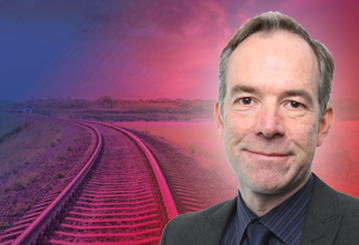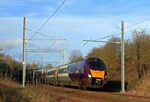As I write this, Christmas is just two weeks away. Soon, millions will be criss-crossing the country to see families and friends for the festive period. ‘Tis the season to be jolly - the most wonderful time of the year.
Or is it? When you find yourself on Christmas Eve in a ten-mile tailback on the M6, and running out of time to make it to your home town’s local pub.
The AA has issued an amber warning for the weekend before Christmas this year, when it expects more than 30 million to take to the roads. But despite the jams, most travellers choose to drive rather than catch a train for the seasonal getaway.
Will the trains be better? The run-up to Christmas is one of the busiest times of the year, says LNER, which has taken on 60 extra station staff to cope.
It expects journeys between December 20-24 to be up by two-thirds on last year, with Saturday December 21 and Friday December 27 the busiest days to travel.
Network Rail has warned of major engineering works over the festive period, but these will be concentrated in the quieter period between Boxing Day and New Year, when numbers through its stations usually dip by 50%-60% compared with a normal week in November or December.
Its engineers will be busy. NR said: “They will be replacing 45 sets of points, rebuilding four bridges, installing 40km of new signalling cables, renewing 17 level crossings, and testing and switching on seven new signalling systems.”
Gary Walsh, director for Network Rail’s West Coast South route, warned in November: “On top of upgrades which will help to make the West Coast Main Line more reliable for our passengers, we have major engineering work affecting other routes into London this year, which means Euston will be extremely busy.”
Paul Clifton hears Network Rail playing down the Euston crowding issue, a response at odds with what we hear almost everywhere else.
From passengers: When someone asks me what I do for a living, and I tell them, the next question is usually “what’s being done about the hellish situation at Euston?”
From industry professionals: those who have worked on the Euston project, as well as those who have a professional rail interest but a less direct involvement in Euston. They will rarely go on the record, as they are concerned about how it will be taken by their employers or former employers to whom they owe a contract of confidentiality. And the bar for whistle-blowing is a high one to clear.
From those in charge: Recently departed Transport Secretary Louise Haigh tweeted: “For too long, the passenger experience at Euston has not been good enough.”
Even Rail Minister and ex-Network Rail Chairman Lord Hendy declared Euston “no longer in a fit condition”.
Ageing infrastructure is a real problem. As we head into the railway’s bicentenary year, we’re reminded that much of it is more than a century old.
Euston station was redeveloped in the 1960s, but rail use and passenger expectations have evolved in half a century. Network Rail is now making short-term improvements according to a five-point plan, and Paul Clifton looks at the progress.
However, now that HS2 tunnelling to the terminus is to restart, Euston’s future is about much more than departure information and crowd management. It is a huge opportunity.
After years of construction and delays, local residents and businesses can now start to look forward to their neighbourhood getting back to normal - and receiving a huge economic boost.
It’s been a long haul and there’s still a long way to go. But that part of London can once again look forward to new housing and an ambitious regeneration programme.
In his deep dive into what HS2 will mean for the longer-term future of Euston and the surrounding area, Tom Edwards hears from locals and developers. If it’s anything like the regeneration of the neighbouring King’s Cross area, it will be impressive and exciting.
In the meantime, if you’re travelling this festive period, have a safe journey, wherever and however you may make it. On the bright side, passengers don’t have to worry about COVID travel restrictions or the likelihood of major rail strikes this year.
Delays on the Christmas getaway are nothing new. Chris Rea wrote Driving Home for Christmas while stuck (as the song says) “Top to toe in tailbacks”, as his wife drove them from Abbey Road studios in London to their home in Middlesborough for Christmas 1978.
Rea says they chose to drive because they couldn’t afford the train.
Would the train have been quicker? We don’t exactly which day he travelled just before Christmas 1978, but it took them six hours and he didn’t get back until 0300 due to heavy snow causing traffic jams. So some further research and educated guesses may be called for. But perhaps a reader could have a go at working out whether it was probably faster or not?
Last Christmas, the University of Sheffield calculated that it would have been much greener for them to take the train. If they had, we might now be humming Riding Home for Christmas instead. The university researchers assumed his public transport route would have started with the tube from St John’s Wood to Kings Cross, then up the East Coast Mainline to Darlington before catching the train to Middlesbrough.
For digital subscribers, our next issue will arrive in your inbox on schedule on Saturday December 21, while the traditional print copy should land through your letter box just after Christmas Day. So, a Happy Christmas to all our readers.


















Login to comment
Comments
No comments have been made yet.